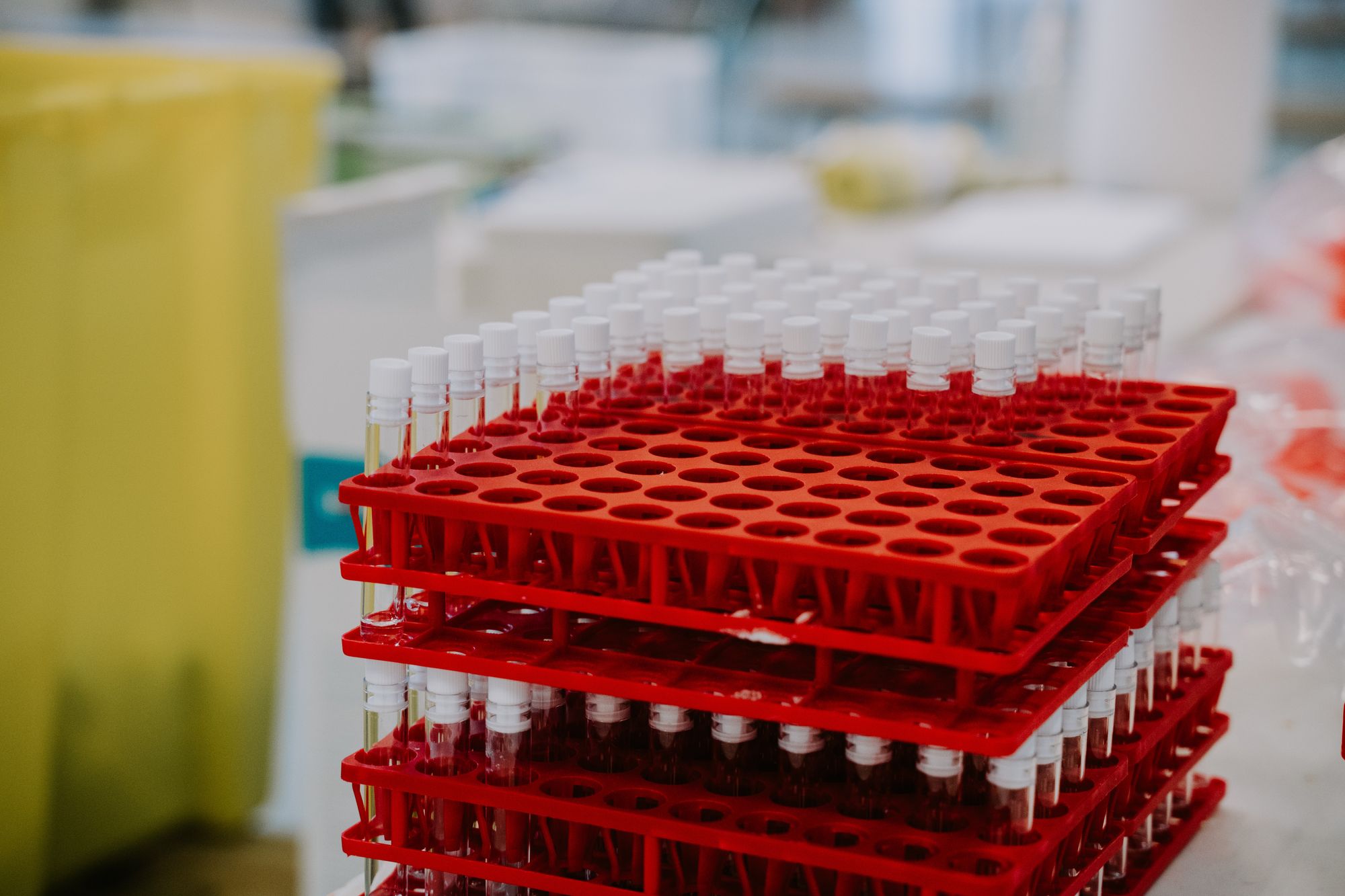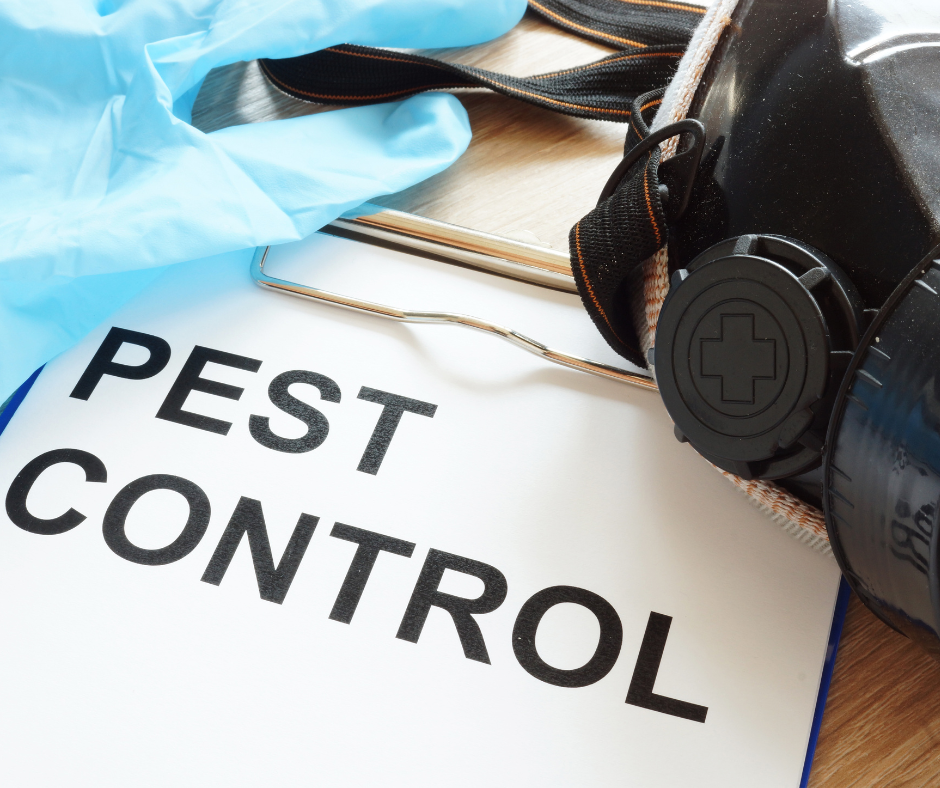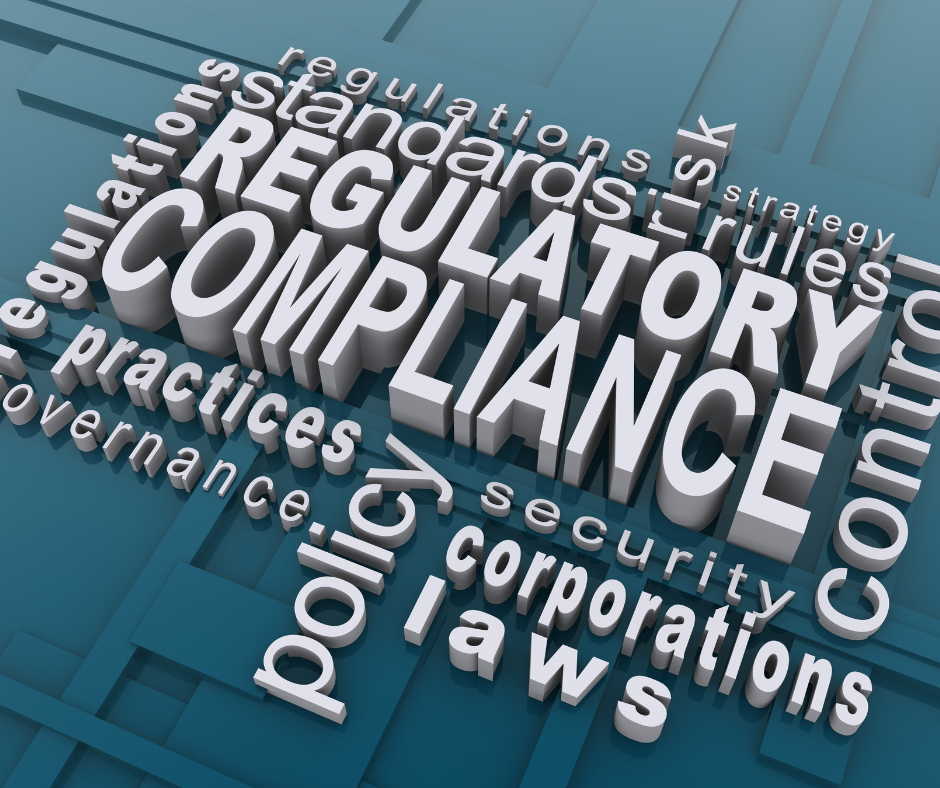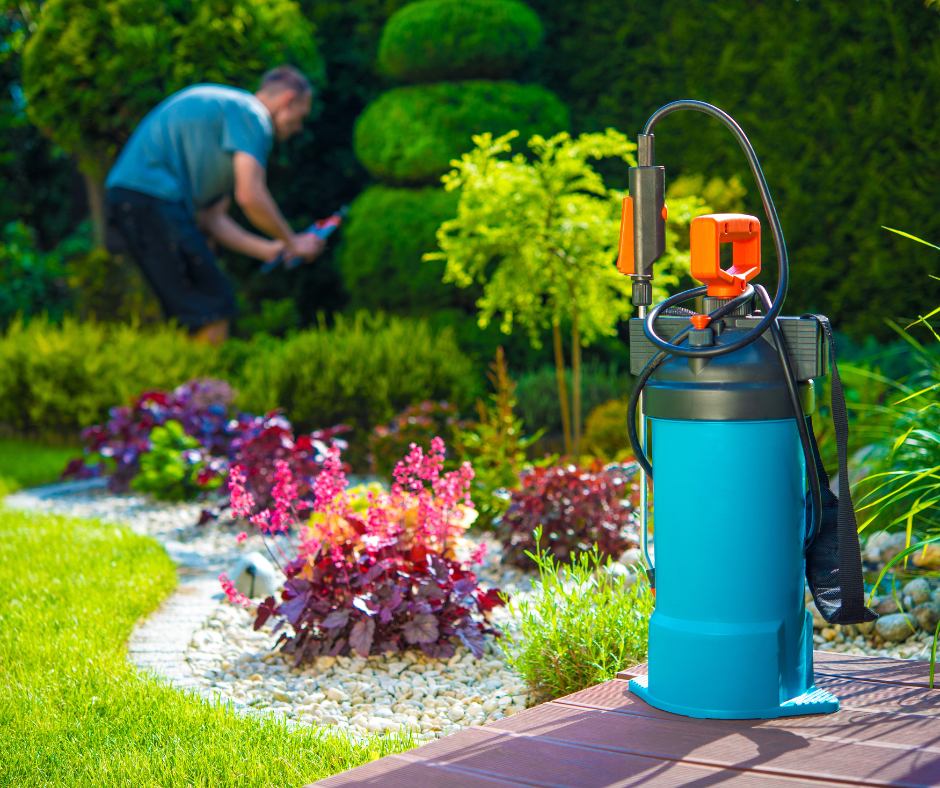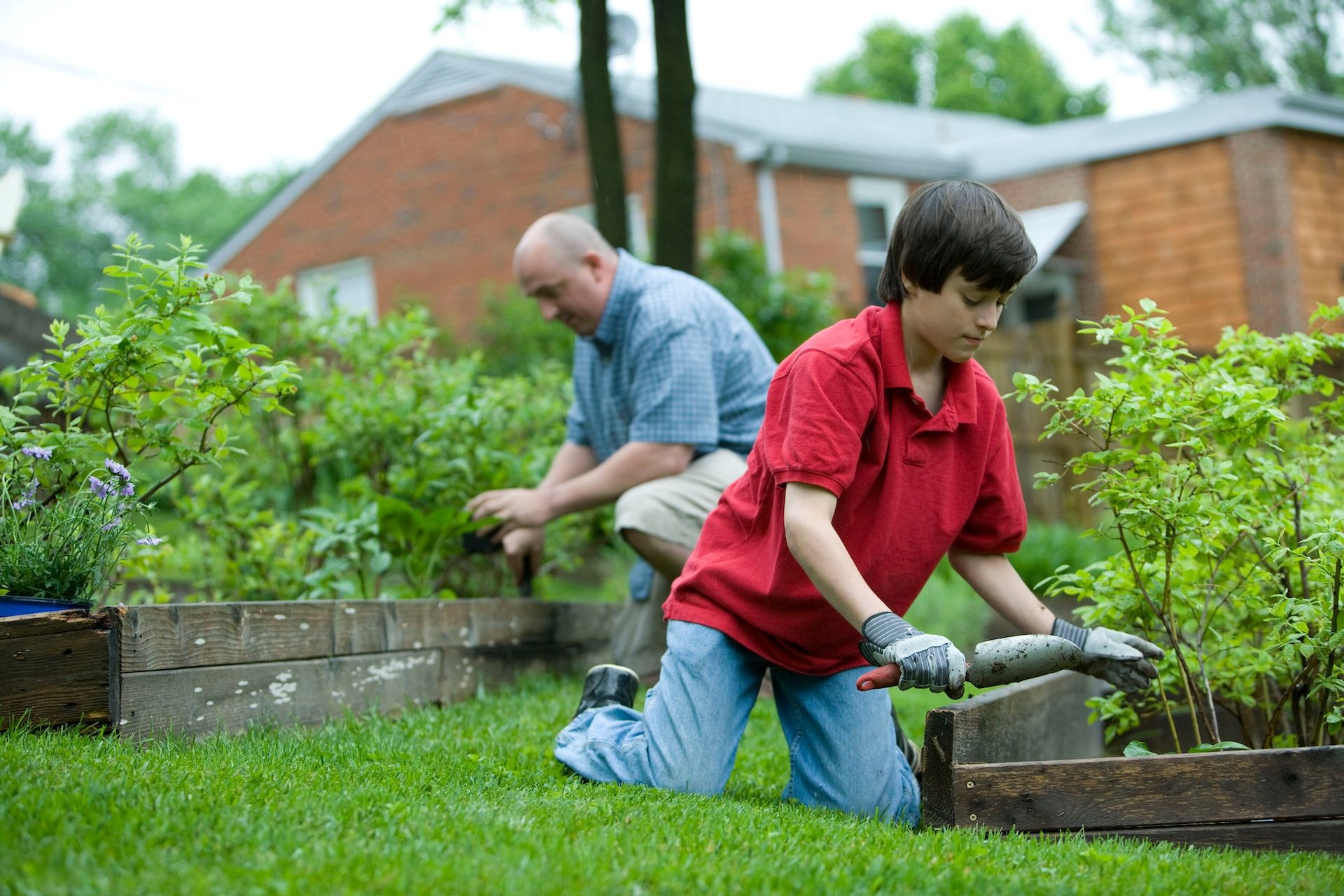Pest control production is a complex and vital process. Failure to execute it correctly can have serious consequences for both the environment and human health.
The use of pesticides has been around for centuries, and their use has increased dramatically in recent decades as demand for food has increased. Pesticides are essential tools in the arsenal of any farmer or gardener and play an important role inumenting both crop growth and food security.
There are a number of important factors to consider when producing pesticide products, including safety, environmental impact, dosage formulation, storage and disposal. This article will provide an overview of these crucial aspects and highlight some key considerations you should take into account when planning your pest control production.
In this article, we'll provide a brief introduction to pest control chemical production and discuss some of the key aspects you need to be aware of. Let’s take a look at the table of content:
- Pest Control Chemical Production
- Importance of Pest Control in Agriculture and the Need for Pest Control Chemicals
- Different Types of Pest Control Chemicals
- General Steps Involved in the Production of Pest Control Chemicals
- Importance of Quality Control Measures and Regulations in Chemical Production
- Active Ingredients and their Role in Pest Control Chemicals
- What Formulations Are and How they Affect the Effectiveness of Pest Control Chemicals?
- Various Methods of Applying Pest Control Chemicals
- Potential Risks and Hazards Associated with the Use of Pest Control Chemicals
- Safety Precautions that Should be Considered
- Frequently Asked Questions on Pest Control Chemical Production
- Wrapping Up
- How Deskera Can Assist You?
Let's get started!
Pest Control Chemical Production
Pest control chemicals are used to control pests that pose a threat to human health, crops, and structures. These chemicals are formulated to target specific pests, making them a highly effective means of pest control. However, the production of pest control chemicals requires specialized knowledge and skills to ensure their safety and effectiveness.
The production of pest control chemicals involves several steps, including research and development, formulation, testing, and packaging. During the research and development phase, scientists work to develop new active ingredients or improve existing ones. Once the active ingredients are identified, they are formulated with inert ingredients, such as solvents and emulsifiers, to create the final product.
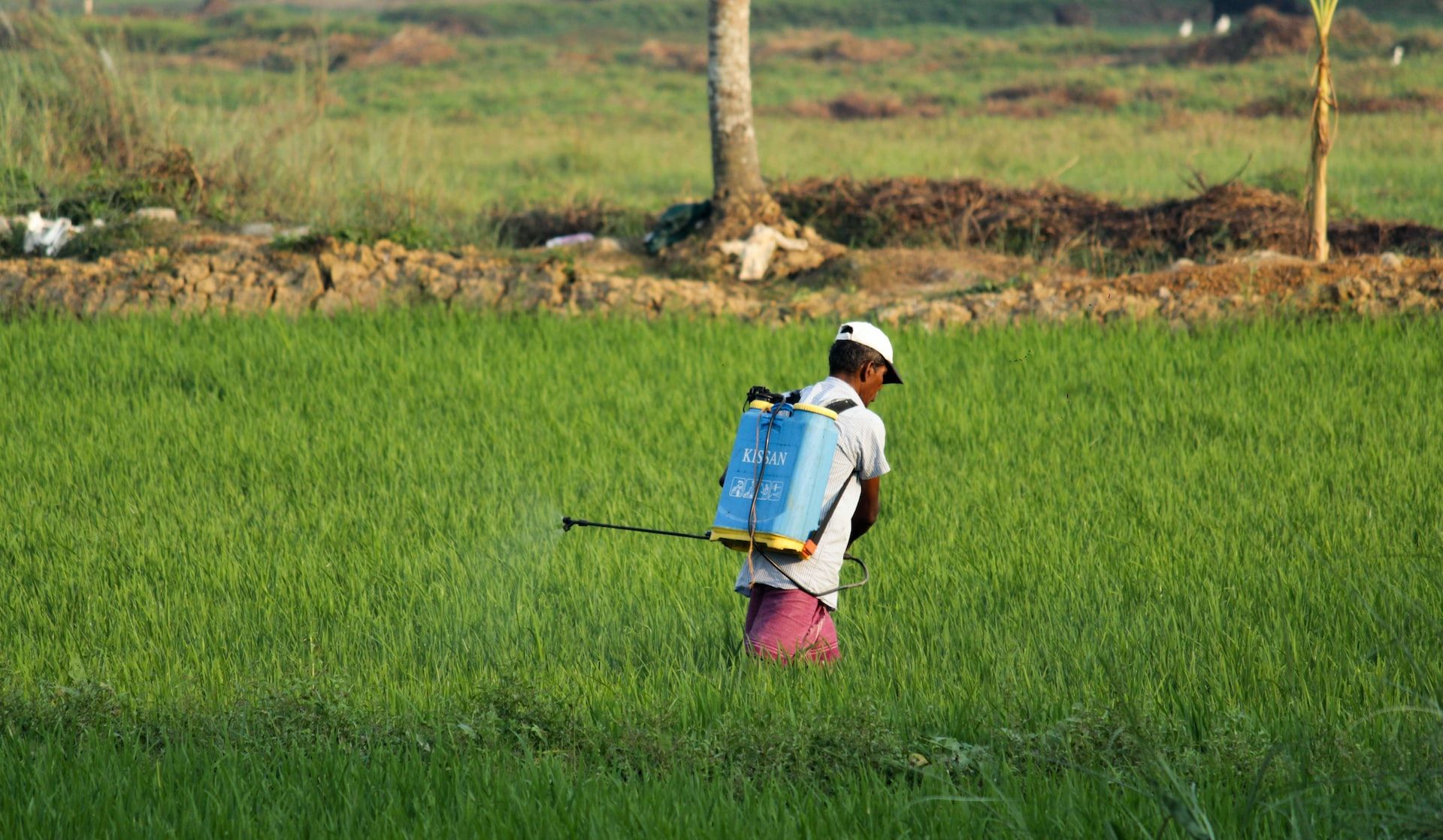
The formulation of pest control chemicals must be carefully designed to ensure their effectiveness and safety. The formulation should be stable and easy to apply, and the active ingredients should be of high quality and purity. The final product should also be labeled with appropriate warnings and instructions for use to minimize the risks associated with its use.
Before pest control chemicals are released into the market, they undergo rigorous testing to ensure their safety and effectiveness. The testing includes laboratory and field trials to determine the toxicity and efficacy of the chemicals. The testing must comply with regulations and guidelines set by regulatory agencies, such as the Environmental Protection Agency (EPA).
The packaging of pest control chemicals is also an important aspect of their production. Moreover, the packaging should be designed to protect the chemicals from moisture, heat, and other environmental factors that may affect their stability and effectiveness. Additionally, the packaging should be labeled with appropriate warnings and instructions for use to minimize the risks associated with their use.
Importance of Pest Control in Agriculture and the Need for Pest Control Chemicals
Pest control is essential in agriculture to prevent pests from damaging crops and reducing yields. Pests such as insects, weeds, and rodents can cause significant economic losses and threaten food security. Without pest control measures, farmers may struggle to produce enough food to meet the demand of the growing population.
Pest control chemicals, such as insecticides and herbicides, play a vital role in controlling these pests and protecting crops. They help to improve crop yield, quality, and profitability by reducing pest damage and competition for resources. Pest control chemicals also enable farmers to produce more food on less land, which helps to preserve natural habitats and reduce deforestation.
However, it is important to use these chemicals responsibly and safely to avoid potential risks to human health and the environment. Overuse or misuse of pest control chemicals can lead to the development of pesticide-resistant pests, harm beneficial insects and wildlife, contaminate soil and water, and pose a risk to human health. Therefore, it is essential to use these chemicals in a way that minimizes their impact on the environment and human health.
Different Types of Pest Control Chemicals
There are two main types of pest control chemicals used in agriculture: insecticides and herbicides.
Insecticides:
Insecticides are chemicals designed to kill or control insect pests. There are various types of insecticides, including:
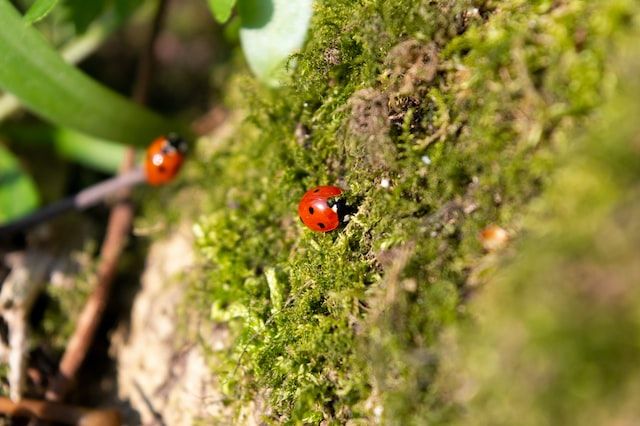
- Contact insecticides: These are applied directly to the pest and kill it upon contact.
- Systemic insecticides: These are absorbed by the plant and kill the pest when it feeds on the plant.
- Fumigants: These are gases that are released to control pests in enclosed spaces.
- Insect growth regulators: These interfere with the insect's growth and development, preventing it from reaching maturity or reproducing.
Herbicides:
Herbicides are chemicals designed to control or kill weeds. There are various types of herbicides, including:
- Selective herbicides: These are designed to kill specific types of weeds while leaving the crops unharmed.
- Non-selective herbicides: These will kill any plant they come into contact with.
- Contact herbicides: These kill the plant upon contact with the herbicide.
- Systemic herbicides: These are absorbed by the plant and kill the plant from the inside.
Both insecticides and herbicides can be further classified into various categories based on their chemical composition and mode of action. It is important to select the appropriate type of pest control chemical for the specific pest problem and to follow the recommended dosage and application methods to ensure effective pest control while minimizing the impact on the environment and human health.
Difference between the Two Types of Pest Control Chemicals and their Respective Uses
The two main types of pest control chemicals used in agriculture are insecticides and herbicides.
Insecticides are chemicals that are designed to control or kill insect pests. They are used to protect crops from a variety of insect pests, including caterpillars, beetles, and aphids.
Further, insecticides can be applied in various ways, including as sprays, dusts, baits, and systemic treatments. Insecticides can have different modes of action, including killing the insect upon contact or interfering with its growth and development. Insecticides can be selective or non-selective, depending on their effectiveness on specific types of insects.
Herbicides, on the other hand, are chemicals that are designed to control or kill weeds. They are used to protect crops from weed competition, which can reduce crop yield and quality. Herbicides can be applied in various ways, including as sprays, granules, or as a pre-emergent treatment before the weed seeds germinate. Herbicides can have different modes of action, including killing the plant upon contact or systemic absorption.
The key difference between insecticides and herbicides is their target. Insecticides target insect pests, while herbicides target weeds. It is important to use the appropriate type of pest control chemical for the specific pest problem to ensure effective control while minimizing the impact on the environment and human health.
Furthermore, it is also essential to follow recommended dosage and application methods and to take appropriate safety precautions when handling and applying these chemicals.
General Steps Involved in the Production of Pest Control Chemicals
The production of pest control chemicals typically involves the following general steps:
Synthesis of the Active Ingredient:
The active ingredient is the chemical component of the pest control product that is responsible for controlling the pest. The active ingredient is typically synthesized in a chemical plant using various chemical reactions.
Formulation:
The active ingredient is formulated with other ingredients to create a product that is easy to use and effective in controlling pests. Formulation can include mixing the active ingredient with other chemicals, such as solvents, surfactants, and stabilizers.
Quality Control:
Quality control checks are performed to ensure that the product meets industry standards and regulatory requirements. This can include testing the product for purity, potency, and stability.
Packaging:
The finished product is packaged in containers suitable for distribution and use. This can include packaging the product in various sizes and types of containers, such as bottles, bags, and aerosol cans.
Distribution and Sales:
The product is distributed to retailers and other distribution channels for sale to end-users. Pest control chemicals are typically sold to farmers, landscapers, and other professionals involved in pest control.
Training and Education:
It is important to provide training and education to users of pest control chemicals to ensure safe and effective use. This can include providing instructions on proper application methods, dosage, and safety precautions.
Overall, the production of pest control chemicals involves a complex process that requires expertise in chemistry, formulation, and quality control. It is essential to follow strict regulatory requirements and safety protocols to ensure the safe and effective use of these chemicals.
Importance of Quality Control Measures and Regulations in Chemical Production
Quality control measures and regulations are crucial in pest control chemical production to ensure that the products are safe and effective for their intended use. Here are some reasons why quality control measures and regulations are important:
Safety:
Quality control measures and regulations help to ensure that pest control chemicals are safe for use. This includes testing the products for potential hazards, such as toxicity and environmental impacts, and ensuring that they meet strict safety standards before they are made available to the public.
Effectiveness:
Quality control measures and regulations help to ensure that pest control chemicals are effective in controlling pests. This includes testing the products for efficacy and ensuring that they are formulated with the appropriate concentration and combination of ingredients to achieve the desired level of pest control.
Compliance:
Quality control measures and regulations help to ensure that pest control chemicals comply with regulatory requirements. This includes ensuring that the products are registered with the appropriate regulatory agencies and that they meet strict labeling and packaging requirements.
Reputation:
Quality control measures and regulations help to ensure that pest control chemical manufacturers maintain a positive reputation in the industry. This includes ensuring that their products meet high standards for quality and safety and that they are transparent in their operations and processes.
Therefore, quality control measures and regulations are essential in pest control chemical production to ensure that the products are safe, effective, and comply with regulatory requirements.
By adhering to these measures, chemical manufacturers can maintain the trust of their customers and the broader community, while ensuring that pest control chemicals remain an important tool in protecting crops and controlling pests.
Active Ingredients and their Role in Pest Control Chemicals
Active ingredients are the chemical compounds in pest control products that are responsible for controlling pests. These compounds can be naturally occurring or synthetic and are specifically designed to target the pest in question. The active ingredient is the most important component of a pest control product and is responsible for its effectiveness.
The role of the active ingredient is to disrupt the physiological or biochemical processes of the pest, leading to its death or control. For example, an insecticide may interfere with the insect's nervous system, causing paralysis or death. Similarly, herbicide may disrupt the plant's ability to synthesize certain amino acids or proteins, causing it to wither and die.
The effectiveness of the active ingredient is influenced by several factors, including the type and concentration of the active ingredient, the formulation, and the method of application.
It is important to use the appropriate active ingredient for the specific pest problem to ensure effective control while minimizing the impact on the environment and human health.
It is also important to note that active ingredients in pest control chemicals can pose potential hazards to humans, animals, and the environment.
Therefore, it is essential to follow recommended dosage and application methods and to take appropriate safety precautions when handling and applying these chemicals. Regulatory agencies typically review the safety and efficacy of active ingredients before they are approved for use in pest control products.
Examples of Commonly Used Active Ingredients and their Effects on Pests
Here are some examples of commonly used active ingredients in pest control products and their effects on pests:
Imidacloprid:
Imidacloprid is a widely used insecticide that targets the nervous system of insects. It is effective against a wide range of insect pests, including aphids, whiteflies, and leafhoppers.
Glyphosate:
Glyphosate is a broad-spectrum herbicide that inhibits the production of certain amino acids in plants, leading to their death. It is effective against a wide range of weeds, including grasses, broadleaf plants, and woody plants.
Bifenthrin:
Bifenthrin is a synthetic pyrethroid insecticide that acts on the nervous system of insects. It is effective against a variety of pests, including ants, beetles, and termites.
Chlorpyrifos:
Chlorpyrifos is an organophosphate insecticide that affects the nervous system of insects. It is used to control a wide range of pests, including mosquitoes, flies, and cockroaches.
Bacillus Thuringiensis (Bt):
Bt is a naturally occurring bacteria that produces a toxin that is effective against certain insect pests, including caterpillars and mosquitoes. It is commonly used in organic pest control products.
Spinosad:
Spinosad is a naturally occurring compound that is produced by a soil bacterium. It targets the nervous system of insects and is effective against a wide range of pests, including thrips, spider mites, and leaf miners.
These are just a few examples of commonly used active ingredients in pest control products. It is important to note that the efficacy of these ingredients can vary depending on the specific pest problem, and it is essential to use them according to recommended dosage and safety guidelines.
What Formulations Are and How they Affect the Effectiveness of Pest Control Chemicals?
Formulations are the physical compositions of pest control products that contain active ingredients and other substances that help to deliver the active ingredient to the target pest. Formulations can take many different forms, including liquids, powders, granules, and baits.
Formulations play an important role in the effectiveness of pest control chemicals because they can affect the way that the active ingredient is delivered and absorbed by the target pest. The right formulation can improve the efficacy and safety of the product while reducing the environmental impact.
Here are some examples of how different formulations can affect the effectiveness of pest control chemicals:
Liquid formulations: Liquid formulations are commonly used in spray applications and are ideal for controlling pests on foliage or other surfaces. The active ingredient is dissolved or suspended in a liquid carrier, such as water or oil. Liquid formulations can be absorbed quickly by the pest and are often effective in controlling pests that are exposed to the product.
Granular formulations: Granular formulations are used for treating soil-borne pests or for broadcast applications on lawns and other areas. The active ingredient is mixed with a granular carrier, such as sand or clay, and applied to the target area. Granular formulations can provide longer-lasting control of pests in the soil or on surfaces.
Bait formulations: Bait formulations are designed to attract and kill pests, such as ants and cockroaches. The active ingredient is mixed with a food source that is attractive to the pest, and the bait is placed in areas where the pest is likely to be active. Bait formulations can be effective in controlling pests that are difficult to reach with other types of formulations.
Overall, the formulation of a pest control product can greatly affect its effectiveness. The choice of formulation depends on the type of pest being targeted, the location of the infestation, and other factors, such as safety and environmental impact.
It is important to choose the right formulation and to follow recommended application methods to ensure effective pest control while minimizing the impact on the environment and human health.
Different Types of Formulations and their Respective Advantages and Disadvantages
There are several types of formulations available in pest control chemicals, each with its own advantages and disadvantages. Here are some of the most common types:
Liquid Concentrates:
Liquid concentrates are highly concentrated formulations that must be diluted with water before use. They are usually sold in large containers and are designed for use in sprayers or other application equipment.
The main advantage of liquid concentrates is that they are highly effective and can be applied to a large area quickly. However, they can be messy to handle and may require specialized equipment for application.
Granular Formulations:
Granular formulations are solid pellets or beads that are spread over an area using a spreader or other equipment. They are easy to apply and can be effective for controlling pests in outdoor environments. However, they are not suitable for use indoors, and may not be as effective as liquid concentrates in some situations.
Dusts:
Dust formulations are finely ground powders that can be applied to cracks and crevices or other areas where pests may be hiding. They are effective for controlling pests in hard-to-reach areas, but can be messy and may not be as effective as other formulations in open spaces.
Baits:
Baits are formulated to attract pests and contain a toxic substance that kills them. They can be effective for controlling pests in both indoor and outdoor environments but can be time-consuming to apply and may not be suitable for use in areas where children or pets may be present.
Aerosols:
Aerosols are sprays that deliver a fine mist of pesticide into the air. They are effective for controlling pests in areas where other formulations may be difficult to apply, such as attics or crawl spaces. However, they can be harmful if inhaled, and may not be suitable for use in areas with poor ventilation.
Overall, the choice of formulation depends on the type of pest being targeted, the location of the infestation, and the environmental conditions. It is important to carefully read and follow all instructions on the product label to ensure safe and effective use of pest control chemicals.
Various Methods of Applying Pest Control Chemicals
Pest control chemicals can be applied using different methods depending on the nature of the pest and the environment where they need to be controlled. Some of the common methods of applying pest control chemicals include:
Spraying: Spraying is one of the most common methods of applying pest control chemicals. This involves the use of a spray bottle or sprayer to apply the pesticide to the surfaces where the pests are likely to be found. This method is effective for controlling flying insects like mosquitoes, flies, and moths.
Dusting: Dusting involves applying the pesticide in powdered form using a duster or powder applicator. This method is effective for controlling pests like ants, cockroaches, and termites, which crawl on surfaces and are not easily killed by spraying.
Baiting: Baiting involves placing a poisoned food source in an area where the pests are likely to feed. This method is effective for controlling pests like rodents, ants, and termites. The poisoned bait is usually designed to be attractive to the pests, making it easy for them to consume it.
Fumigation: Fumigation involves the use of gas or vapors to kill pests in an enclosed space. This method is effective for controlling pests like bed bugs, cockroaches, and termites that hide in cracks and crevices.
Soil Treatment: Soil treatment involves applying the pesticide to the soil around the perimeter of the building to prevent pests from entering. This method is effective for controlling pests like termites and ants that enter the building from the ground.
ULV (Ultra-low volume) Fogging: ULV fogging involves the use of a fogging machine that creates a fine mist of the pesticide, which is then dispersed into the air. This method is effective for controlling flying insects like mosquitoes, flies, and moths.
It is important to note that the choice of method will depend on the type of pest and the environment in which they need to be controlled. It is also important to follow the manufacturer's instructions and use the appropriate protective equipment when applying pest control chemicals to ensure safety.
Factors that Affect the Choice of Application Method of Pest Control Chemicals
The choice of application method of pest control chemicals can be influenced by several factors, including:
Type of Pest: The type of pest to be controlled is a critical factor in selecting the appropriate application method. For instance, flying insects like mosquitoes, flies, and moths may require spraying or fogging, while crawling insects like ants, cockroaches, and termites may require dusting or baiting.
Location and Environment: The location and environment where the pest control is needed can affect the choice of application method. For example, soil treatment may be appropriate for outdoor areas to control ground-dwelling pests like termites, while fumigation may be necessary for indoor areas that are heavily infested with bed bugs or cockroaches.
Size of the Area to be Treated: The size of the area to be treated can influence the application method. For large areas, ULV fogging may be the most appropriate method, while smaller areas may require spot treatment using sprays or dusts.
Level of Infestation: The severity of the infestation can also determine the choice of application method. For example, a severe infestation of ants or termites may require baiting or soil treatment, while a light infestation may only require spraying or dusting.
Health and Safety Considerations: The health and safety of people and pets in the area to be treated is an essential factor in choosing the application method. For instance, spraying may not be appropriate for areas with high foot traffic, as the pesticide may be harmful if inhaled or ingested. In such cases, baiting or dusting may be more appropriate.
Regulations and Guidelines: Regulations and guidelines set by regulatory agencies may also influence the choice of application method. For example, certain pesticides may be restricted for use in residential areas, while others may only be allowed for use by licensed professionals.
In conclusion, the selection of the appropriate application method for pest control chemicals is crucial for achieving effective pest control while ensuring the safety of people, pets, and the environment. Therefore, all the above factors should be considered when making the choice of application method.
Potential Risks and Hazards Associated with the Use of Pest Control Chemicals
The use of pest control chemicals can pose several risks and hazards to people, pets, and the environment if not used properly. Some of the potential risks and hazards associated with the use of pest control chemicals include:
Health Risks: Exposure to pesticides can cause various health problems ranging from mild irritation to severe illnesses. Symptoms of pesticide exposure may include dizziness, nausea, vomiting, skin rashes, respiratory problems, and in severe cases, seizures or death.
Environmental Hazards: Pesticides can also be hazardous to the environment. When pesticides are overused, they can contaminate soil and water, causing harm to aquatic life and animals that depend on them. Pesticides can also have a negative impact on pollinators, such as bees, which are essential for the production of many crops.
Resistance: Pests can develop resistance to pesticides over time, making it harder to control them in the future. This can lead to the overuse of pesticides and the need for more potent and toxic chemicals.
Accidental Poisoning: Accidental poisoning can occur if pesticides are not stored or used correctly. Children and pets are especially vulnerable to accidental poisoning.
Damage to Non-Target Organisms: Pesticides can kill non-target organisms, such as beneficial insects, birds, and mammals, which are essential for maintaining ecological balance.
Contamination of Food and Water: Improper use of pesticides can lead to the contamination of food and water, which can lead to health problems for humans and animals.
To minimize the risks and hazards associated with the use of pest control chemicals, it is essential to follow the manufacturer's instructions carefully and use appropriate protective equipment.
Additionally, it is crucial to consider alternative pest control methods that are less hazardous to the environment and human health, such as integrated pest management (IPM). IPM uses a combination of pest control methods that are safe and effective, including cultural, mechanical, and biological controls, as well as the judicious use of pesticides when necessary.
Safety Precautions that Should be Considered
Chemicals used for pest control can be hazardous to human health, the environment, and non-target organisms. Therefore, it is essential to take appropriate safety precautions during chemical production, handling, and application to minimize the risks associated with their use.
Some of the safety precautions that should be taken include:
Proper Labeling: All containers of chemicals should be properly labeled with the name of the chemical, its concentration, and any precautions that need to be taken during its use.
Personal Protective Equipment (PPE): Protective clothing, gloves, masks, and goggles should be worn when handling chemicals to minimize exposure to the skin, eyes, and respiratory system.
Proper Storage: Chemicals should be stored in a secure area, away from heat and direct sunlight, and out of reach of children and pets.
Proper Ventilation: Adequate ventilation should be provided when handling chemicals to minimize exposure to fumes and vapors.
Proper Mixing and Dilution: Chemicals should be mixed and diluted according to the manufacturer's instructions to avoid overuse and exposure.
Application Timing: Chemicals should be applied during periods when there is minimal human activity, and pets should be removed from the area to avoid exposure.
Cleaning and Disposal: All equipment used during chemical application should be cleaned and disposed of properly to avoid contamination of the environment.
Professional Application: Professional applicators should be used for the application of chemicals, especially for large-scale pest control.
Education and Training: Individuals who handle chemicals should be educated and trained on the proper handling and application of chemicals to minimize exposure and risks.
In conclusion, taking proper safety precautions during chemical production, handling, and application is crucial to minimize the risks and hazards associated with their use. Individuals involved in the use of pesticides should be educated on proper handling and application methods, and professional applicators should be used for large-scale pest control to ensure safety and effectiveness.
Frequently Asked Questions on Pest Control Chemical Production
Following, we've discussed some frequently asked questions (FAQs) associated with pest control chemical production. Let's learn:
Que 1: What are pest control chemicals?
Ans: Pest control chemicals are substances designed to kill or control pests such as insects, rodents, and other unwanted organisms.
Que 2: What is the process of producing pest control chemicals?
Ans: The process of producing pest control chemicals involves the synthesis of various chemicals and compounds that have the ability to kill or control pests. The exact process may vary depending on the specific chemical being produced.
Que 3: What are the types of pest control chemicals?
Ans: There are several types of pest control chemicals, including insecticides, rodenticides, fungicides, herbicides, and repellents.
Que 4: What are the potential risks associated with pest control chemicals?
Ans: The use of pest control chemicals can pose health and environmental risks. These chemicals may be toxic to humans, animals, and plants and can contaminate water and soil.
Que 5: How are pest control chemicals regulated?
Ans: Pest control chemicals are regulated by government agencies, such as the Environmental Protection Agency (EPA), to ensure their safety and effectiveness. The EPA sets standards for the production, labeling, and use of pest control chemicals.
Que 6: What precautions should be taken when handling pest control chemicals?
Ans: Precautions should be taken when handling pest control chemicals to minimize the risk of exposure. This may include wearing protective clothing, using appropriate equipment, and following safety guidelines.
Que 7: How can pest control chemicals be disposed of safely?
Ans: Pest control chemicals should be disposed of in accordance with local regulations. This may involve taking them to a hazardous waste disposal site or following other specific guidelines for safe disposal.
Que 8: Are there alternatives to using pest control chemicals?
Ans: Yes, there are alternatives to using pest control chemicals, such as integrated pest management (IPM) strategies, which involve a combination of pest prevention, monitoring, and control techniques that reduce the need for chemical treatments. Other alternatives may include the use of natural or organic pest control methods.
Wrapping Up
In conclusion, pest control chemicals are an essential component of pest management programs used to protect human health and prevent damage to crops and structures.
However, the production, handling, and application of these chemicals can pose risks and hazards to human health, the environment, and non-target organisms. Therefore, it is essential to follow appropriate safety precautions during chemical production, handling, and application to minimize these risks.
Manufacturers of pest control chemicals should prioritize the safety of their products by following strict guidelines and regulations for production, labeling, and testing. Additionally, individuals involved in the use of these chemicals should be properly educated and trained on the safe handling and application of pesticides.
Integrated pest management (IPM) is an effective approach to pest control that combines multiple pest control strategies, including the judicious use of pesticides. By using IPM and proper safety precautions during chemical production, handling, and application, we can effectively manage pests while minimizing the risks and hazards associated with the use of pest control chemicals.
How Deskera Can Assist You?
Deskera's integrated financial planning tools allow investors to better plan their investments and track their progress. It can help investors make decisions faster and more accurately.
Deskera Books enables you to manage your accounts and finances more effectively. Maintain sound accounting practices by automating accounting operations such as billing, invoicing, and payment processing.

Deskera CRM is a strong solution that manages your sales and assists you in closing agreements quickly. It not only allows you to do critical duties such as lead generation via email, but it also provides you with a comprehensive view of your sales funnel.
Deskera People is a simple tool for taking control of your human resource management functions. The technology not only speeds up payroll processing but also allows you to manage all other activities such as overtime, benefits, bonuses, training programs, and much more. This is your chance to grow your business, increase earnings, and improve the efficiency of the entire production process.
Final Takeaways
We've arrived at the last section of this guide. Let's have a look at some of the most important points to remember:
- Pest control chemicals are used to control pests that pose a threat to human health, crops, and structures. These chemicals are formulated to target specific pests, making them a highly effective means of pest control.
- Pest control chemicals, such as insecticides and herbicides, play a vital role in controlling these pests and protecting crops. They help to improve crop yield, quality, and profitability by reducing pest damage and competition for resources.
- The active ingredient is formulated with other ingredients to create a product that is easy to use and effective in controlling pests. Formulation can include mixing the active ingredient with other chemicals, such as solvents, surfactants, and stabilizers.
- Quality control measures and regulations help to ensure that pest control chemicals comply with regulatory requirements. This includes ensuring that the products are registered with the appropriate regulatory agencies and that they meet strict labeling and packaging requirements.
- The effectiveness of the active ingredient is influenced by several factors, including the type and concentration of the active ingredient, the formulation, and the method of application. It is important to use the appropriate active ingredient for the specific pest problem to ensure effective control while minimizing the impact on the environment and human health.
- The type of pest to be controlled is a critical factor in selecting the appropriate application method. For instance, flying insects like mosquitoes, flies, and moths may require spraying or fogging, while crawling insects like ants, cockroaches, and termites may require dusting or baiting.
- The health and safety of people and pets in the area to be treated is an essential factor in choosing the application method. For instance, spraying may not be appropriate for areas with high foot traffic, as the pesticide may be harmful if inhaled or ingested. In such cases, baiting or dusting may be more appropriate.
Related Articles
